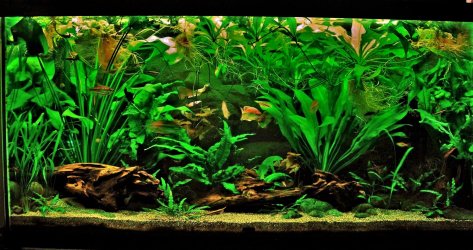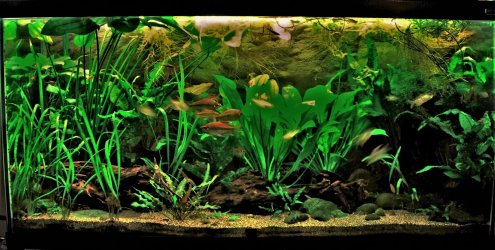http://rainbowfish.angfaqld.org.au/Melano.htm
http://rainbowfish.angfaqld.org.au/Kamaka.htm
Small (2-3 inches), peaceful, not normally as blue as in the picture, males have long pointed dorsal and anal fins, females have shorter rounded dorsal and anal fins. Keep them in groups of 8 or more. Easy to breed. Feed them a variety of foods including plant based (goldfish food) and duckweed.
I had problems keeping them in Western Australia and we couldn't work out why because they were local bred. But most other people kept them without any issues. They were about the only rainbowfish I ever had issues with. I must point out that the New Guinea rainbowfishes kept in Australia originate from a very small number of eggs that were smuggled into the country, so their genetics are pretty crap. If you live outside Australia you will have better quality fish and probably no issues with them.
http://rainbowfish.angfaqld.org.au/Kamaka.htm
Small (2-3 inches), peaceful, not normally as blue as in the picture, males have long pointed dorsal and anal fins, females have shorter rounded dorsal and anal fins. Keep them in groups of 8 or more. Easy to breed. Feed them a variety of foods including plant based (goldfish food) and duckweed.
I had problems keeping them in Western Australia and we couldn't work out why because they were local bred. But most other people kept them without any issues. They were about the only rainbowfish I ever had issues with. I must point out that the New Guinea rainbowfishes kept in Australia originate from a very small number of eggs that were smuggled into the country, so their genetics are pretty crap. If you live outside Australia you will have better quality fish and probably no issues with them.





